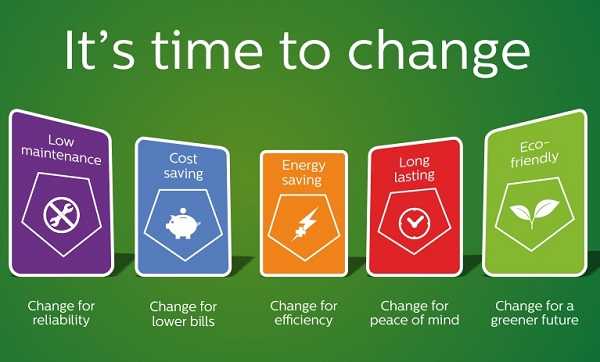The Benefits of LED Lights
LED lights have revolutionized the lighting industry with their numerous advantages over traditional lighting options. In this article, we will explore the benefits of LED lights and why they are becoming increasingly popular in both residential and commercial settings.
Energy Efficiency
One of the key advantages of LED lights is their exceptional energy efficiency. LED lights use significantly less energy compared to traditional incandescent or fluorescent lights. This energy efficiency not only helps reduce electricity bills but also contributes to a greener environment by lowering carbon emissions.
Long Lifespan
LED lights have an impressively long lifespan, often lasting up to 50,000 hours or more. This extended lifespan is a result of their durable design and efficient use of energy. Unlike traditional bulbs, LED lights do not burn out or stop working suddenly. Instead, they gradually dim over time, providing a clear indication that they need replacement.
Cost Savings
While LED lights may have a higher upfront cost compared to traditional lighting options, their long-term cost savings outweigh the initial investment. Due to their energy efficiency and long lifespan, LED lights require fewer replacements and result in lower maintenance costs. Additionally, the reduced energy consumption leads to significant savings on electricity bills over time.
Environmental Friendliness
LED lights are an eco-friendly lighting solution. Unlike traditional lighting options, LED lights do not contain harmful substances such as mercury. This makes them safer to use and easier to dispose of. LED lights also have a lower carbon footprint due to their energy efficiency, contributing to a more sustainable future.
Instantaneous Lighting
LED lights provide instant illumination, unlike some traditional lighting options that may take a few seconds to reach their full brightness. This feature is particularly useful in areas where immediate lighting is required, such as in security lighting or emergencies.
Design Flexibility
LED lights offer remarkable design flexibility, allowing for creative lighting solutions in various applications. They come in a wide range of shapes, sizes, and colors, making them suitable for both functional and decorative purposes. LED lights can be easily integrated into different fixtures, providing versatility in lighting design.
Enhanced Durability
LED lights are highly durable and resistant to shock, vibrations, and external impacts. This durability makes them ideal for outdoor lighting, as they can withstand harsh weather conditions. LED lights are also less prone to breakage, making them a reliable lighting option for both indoor and outdoor environments.
Reduced Heat Emission
Compared to traditional lighting options, LED lights emit significantly less heat. This makes them safer to use, especially in enclosed spaces where heat build-up can be a concern. The reduced heat emission also contributes to energy efficiency, as less energy is wasted in the form of heat.

LED lights offer numerous benefits, including energy efficiency, long lifespan, cost savings, environmental friendliness, instantaneous lighting, design flexibility, enhanced durability, and reduced heat emission. These advantages make LED lights a superior lighting choice for both residential and commercial applications. By embracing LED technology, you can enjoy the benefits of efficient, long-lasting, and environmentally friendly lighting.
Frequently Asked Questions about the Benefits of LED Lights
1. What are the main advantages of LED lights?
LED lights have several benefits, including:
Energy efficiency
Long lifespan
Environmentally friendly
Low heat emission
Wide range of colors and designs
2. How do LED lights save energy?
LED lights are highly energy-efficient as they convert most of the electricity they use into light, rather than heat. This helps reduce energy consumption and lowers electricity bills.
3. How long do LED lights last?
LED lights have an exceptionally long lifespan compared to traditional lighting options. On average, they can last up to 50,000 hours or more, depending on the quality of the LED.
4. Are LED lights environmentally friendly?
Yes, LED lights are environmentally friendly. They do not contain harmful substances like mercury and are 100% recyclable. LED lights also reduce carbon emissions due to their energy efficiency.
5. Do LED lights produce less heat?
LED lights produce very little heat compared to traditional incandescent or fluorescent lights. This makes them safer to use and reduces the risk of fire hazards.
6. Can LED lights be used in outdoor settings?
Yes, LED lights are suitable for outdoor use. They are resistant to extreme temperatures and weather conditions, making them ideal for landscape lighting, streetlights, and other outdoor applications.
7. Are LED lights dimmable?
Yes, many LED lights are dimmable. However, it is important to check the product specifications or consult the manufacturer to ensure compatibility with a dimming system.
8. Do LED lights emit UV radiation?
No, LED lights do not emit significant amounts of ultraviolet (UV) radiation. They are considered safe for use in environments where UV exposure is a concern, such as museums or art galleries.
9. Can LED lights help reduce eye strain?
LED lights can provide better lighting conditions that reduce eye strain, especially when compared to fluorescent lights. LEDs can be adjusted to emit a natural and comfortable light that is easier on the eyes.
10. Are LED lights suitable for all types of lighting fixtures?
LED lights come in various shapes and sizes, making them compatible with most lighting fixtures. From traditional bulbs to recessed lighting, there are LED options available for almost any application.




